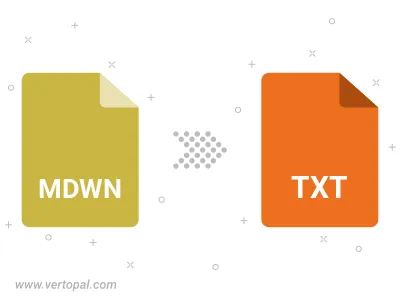Convert MDWN to TXT COMMONMARK
Convert MDWN markup documents to TXT COMMONMARK format, edit and optimize documents online and free.

The MDWN file extension stands for Markdown Document and is associated with the Markdown Markup Language, created by John Gruber. It is used for writing and formatting plain text documents. MDWN files are compatible with various text editors like Markdown, Visual Studio Code, and Atom, and are widely used for documentation, note-taking, and content creation on platforms such as GitHub. The simplicity and readability of Markdown make it popular among developers and technical writers.
The TXT file extension is associated with CommonMark Markdown Language, a simplified markup language designed for easy readability and writability. Markdown is widely used in documentation, blogging, and formatting readme files in software development. Introduced in 2014, CommonMark aims to standardize Markdown's diverse implementations. Its clarity and simplicity make it a preferred choice for developers and technical writers seeking to maintain clean, structured documents.
Select a MDWN markup document from your computer, or drag & drop it on the page.
Choose any MDWN to TXT COMMONMARK converter tools for a customized conversion, and click Convert.
Give it a moment for the TXT COMMONMARK conversion to complete, then download your file afterward.

To change MDWN format to TXT COMMONMARK, upload your MDWN file to proceed to the preview page. Use any available tools if you want to edit and manipulate your MDWN file. Click on the convert button and wait for the convert to complete. Download the converted TXT COMMONMARK file afterward.
Follow steps below if you have installed Vertopal CLI on your macOS system.
cd to MDWN file location or include path to your input file.Follow steps below if you have installed Vertopal CLI on your Windows system.
cd to MDWN file location or include path to your input file.Follow steps below if you have installed Vertopal CLI on your Linux system.
cd to MDWN file location or include path to your input file.